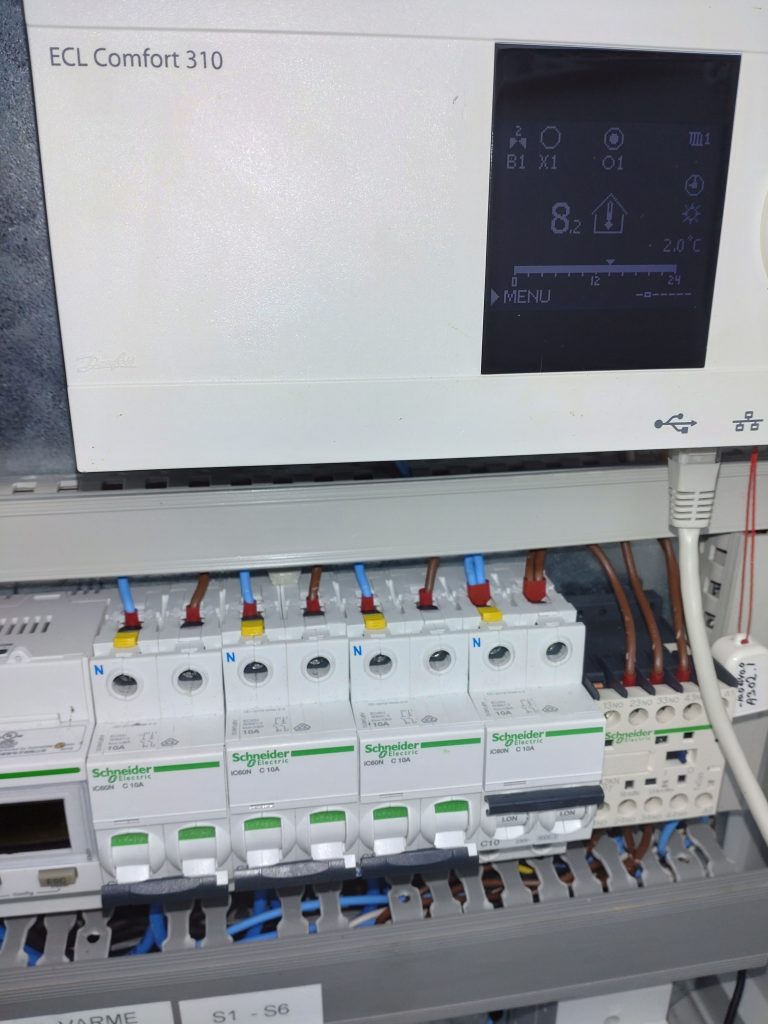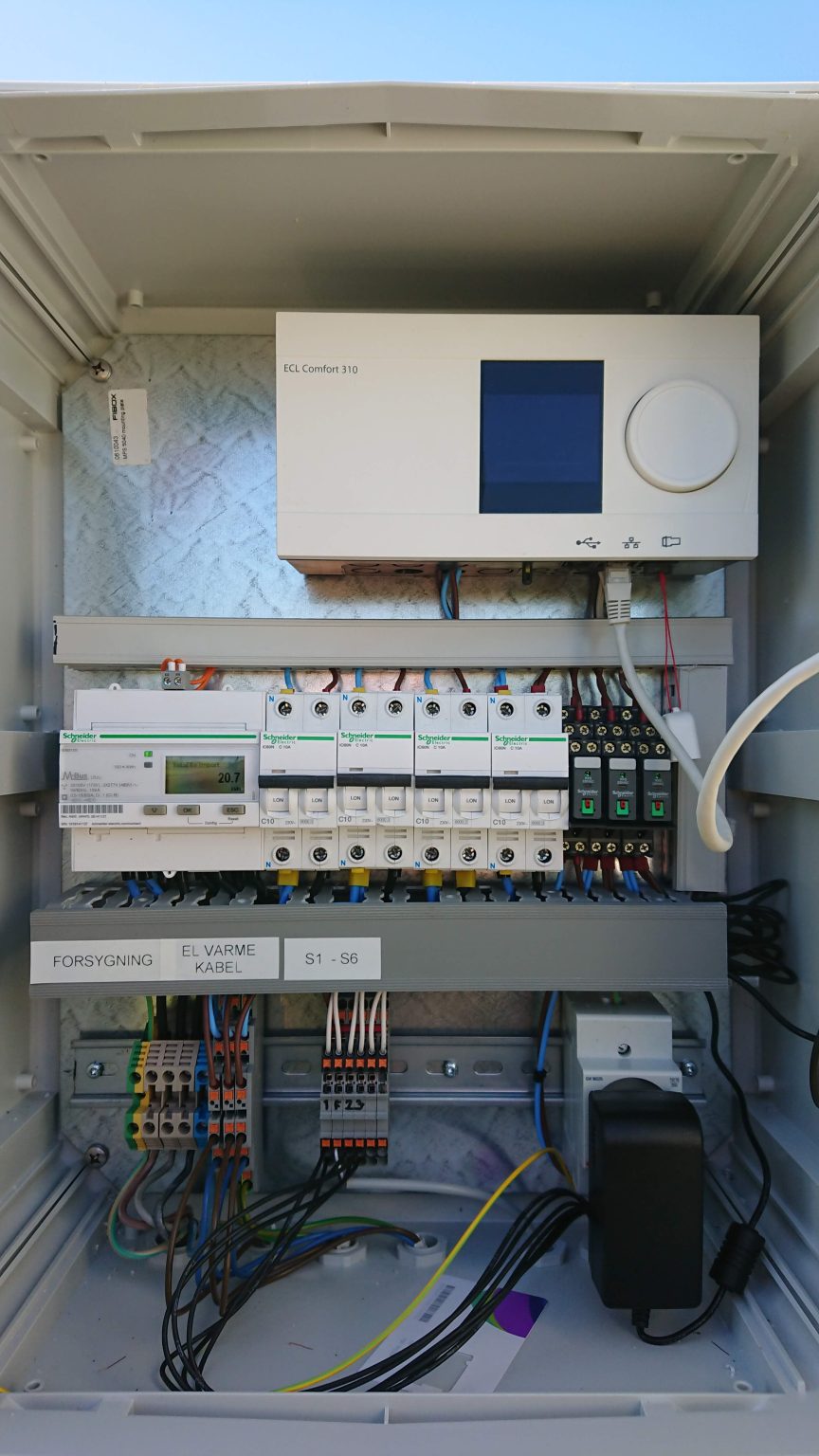Electric frost protection of vineyards
In order to achieve a long growing season, during which the grapes can ripen even at Scandinavian latitudes, the grape plants must set the buds early in the spring. This naturally makes the grapes exposed to late spring frosts.
But it is also a big problem in many other places in Europe. Most people have seen the fantastic pictures of thousands of bonfires in the vineyards of France to protect the vineyard from frost. It is an extremely labor-intensive process and therefore also very expensive.
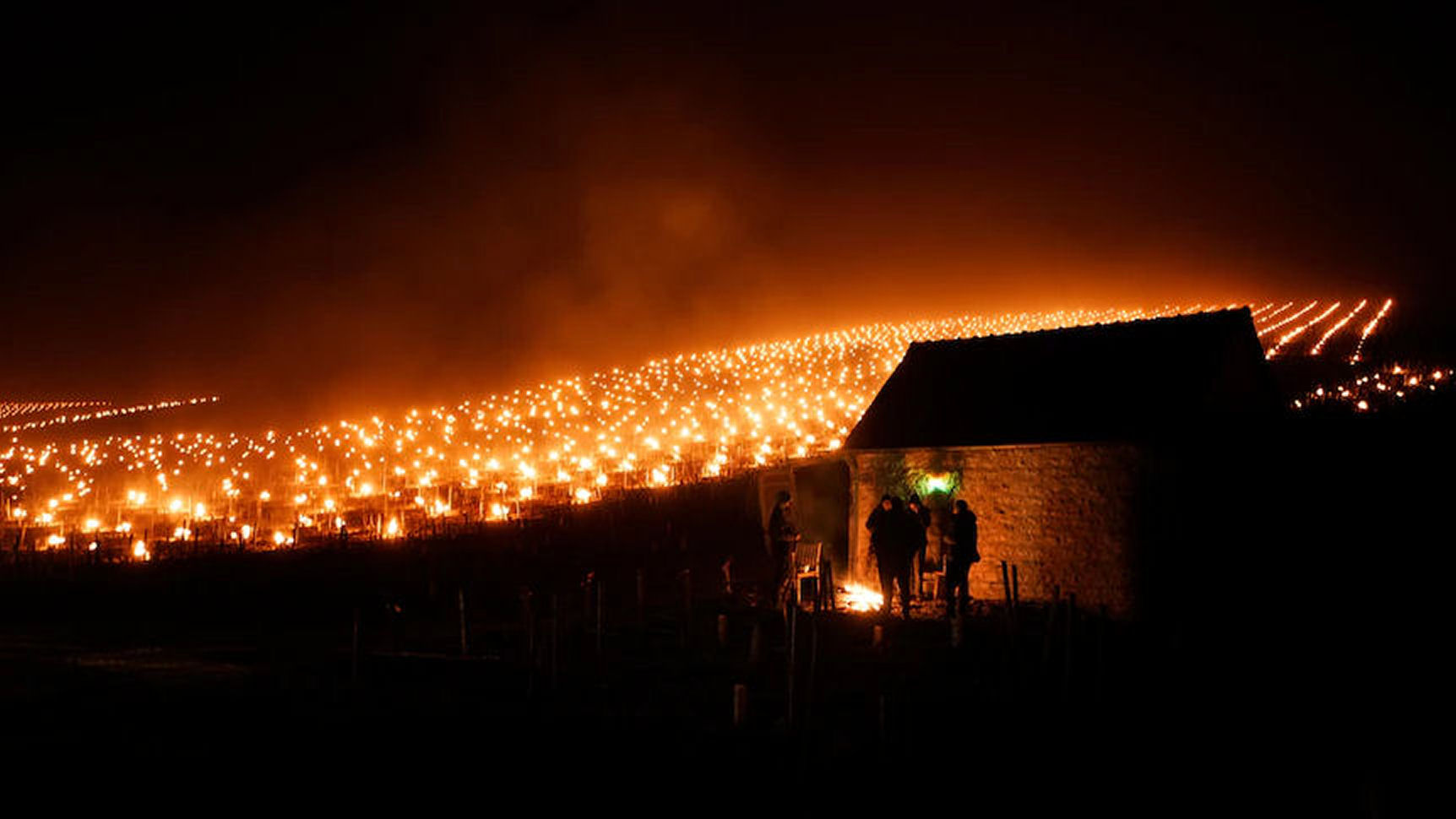
Electric heating cables
In our vineyard, the lower half of the field, where the cold frosty air collects, is protected by electric heating cables from Danfoss (DEVI). The system turns on automatically when the temperature drops to 2 degrees and distributes the heat in the plant via the sap flow in the vine, which is tied down to the cable. This protects the young buds during exactly the hours when the temperature becomes critical. Although electricity is expensive these days, a few hours of use at night during the critical few weeks is cheap protection compared to having crews running around the vineyard at night with barbecue lighters and candle holders - or helicopter overflights to swirl the cold air away.
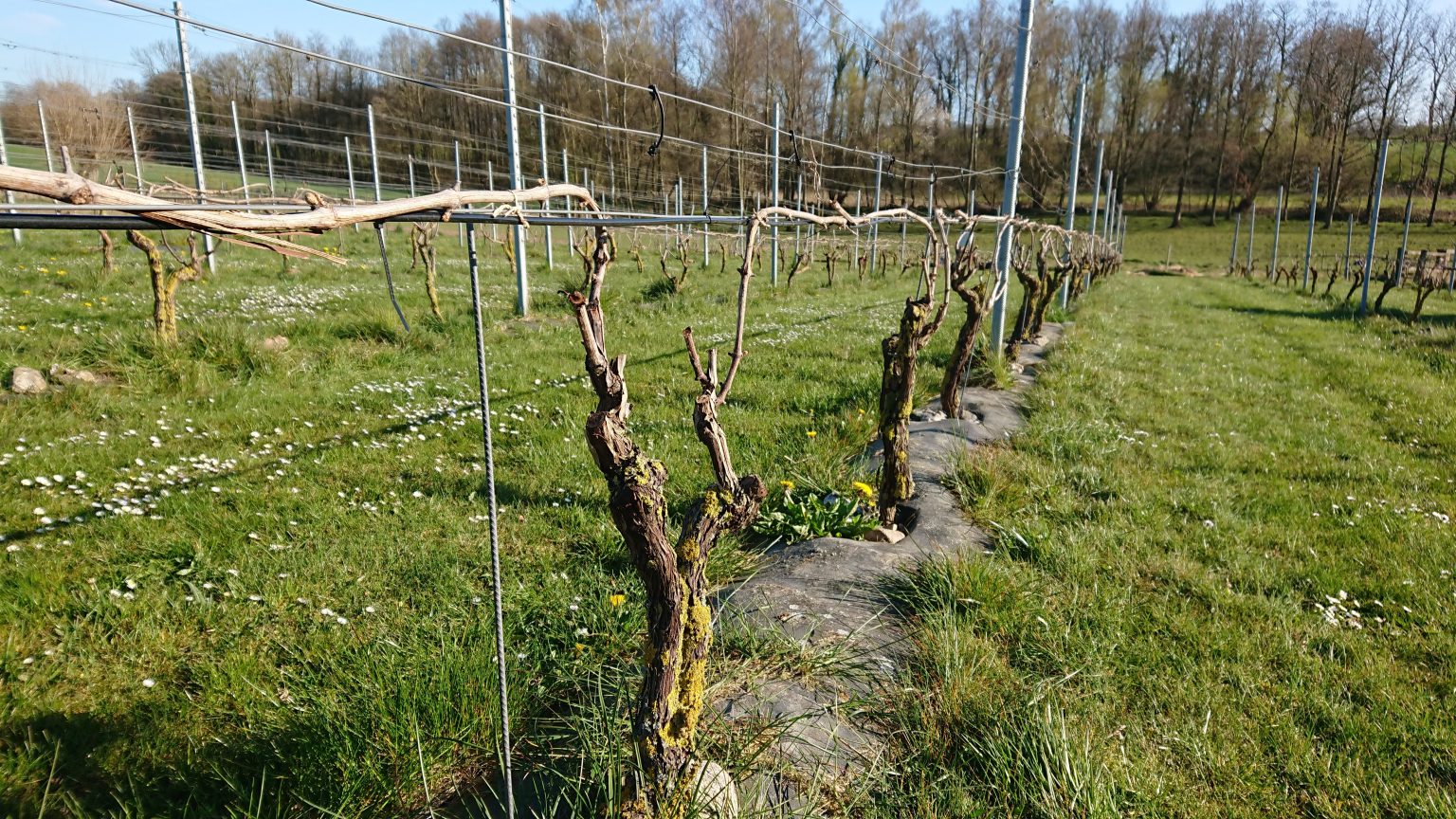
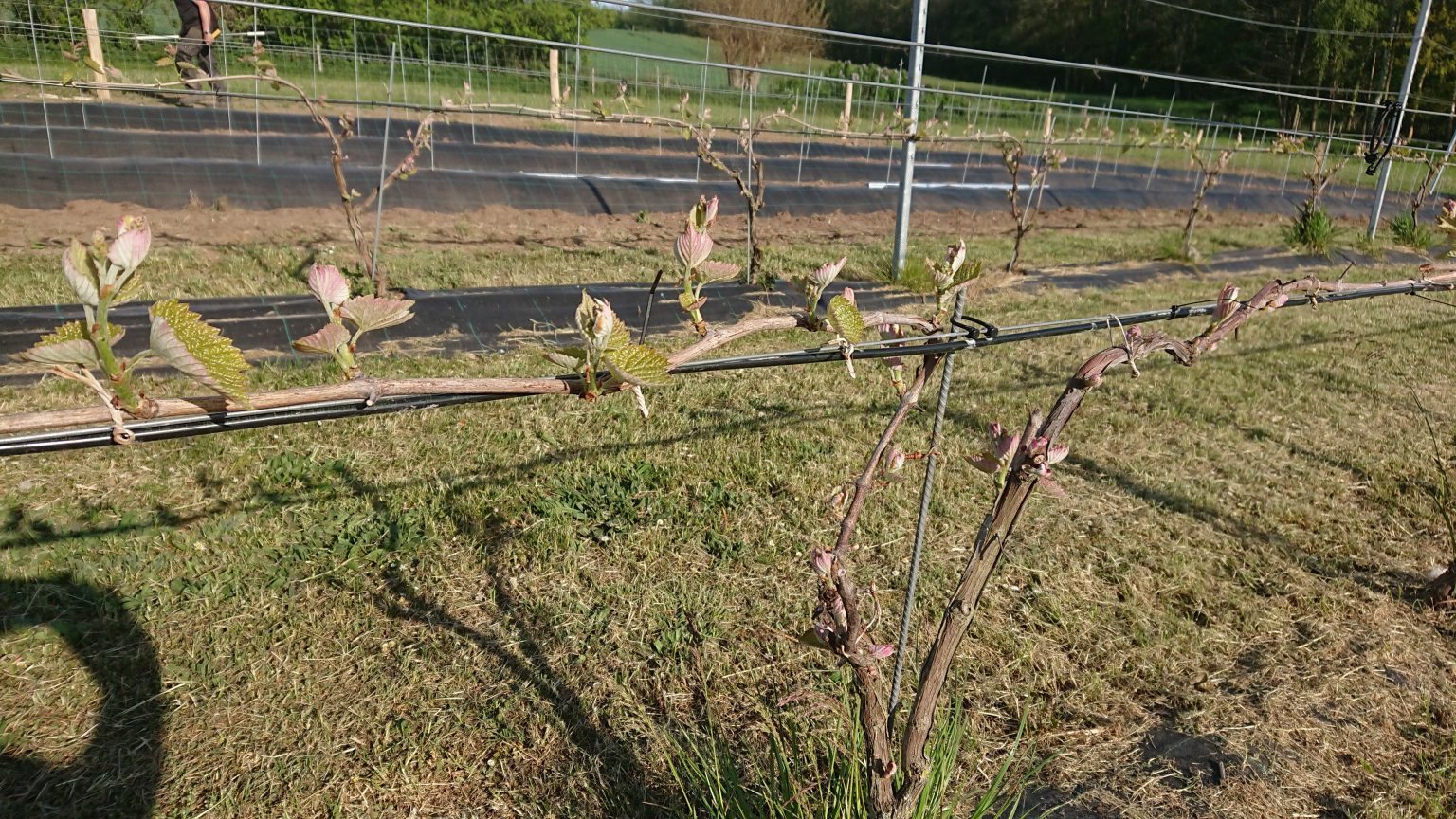
Monitoring the temperature
The temperature of the air at the height of the vine is monitored by an ECL310 heating controller, which switches the heating cables on when the temperature falls below 2 degrees Celsius. The control also monitors the temperature of the cable and selected locations on the fruit vine.
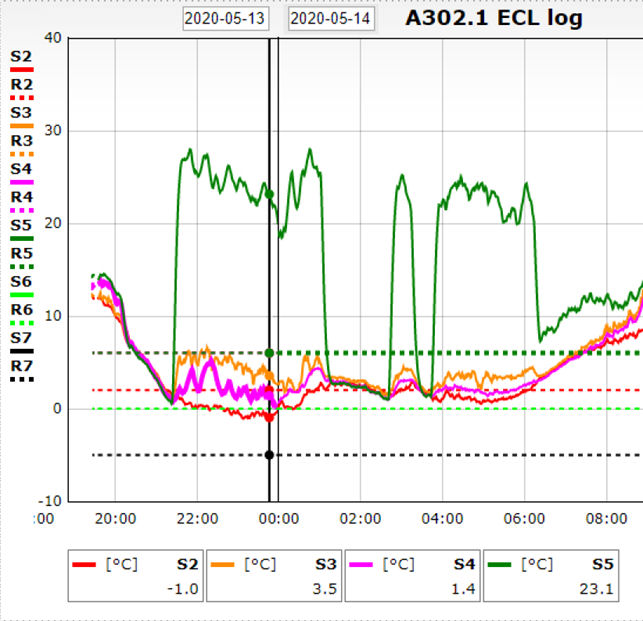
The above measurement shows temperature measurements at the facility one night, when the temperature dropped several times around the freezing point.
The green curve shows when the power cable is switched on and gets hot. Approx. 20 degrees above the surroundings. It raises the temperature 2-3 degrees in the fruit vine, which thus stays on the "right side" of the freezing point all night.
And meanwhile we can sleep safely without worrying about the risk of night frost.
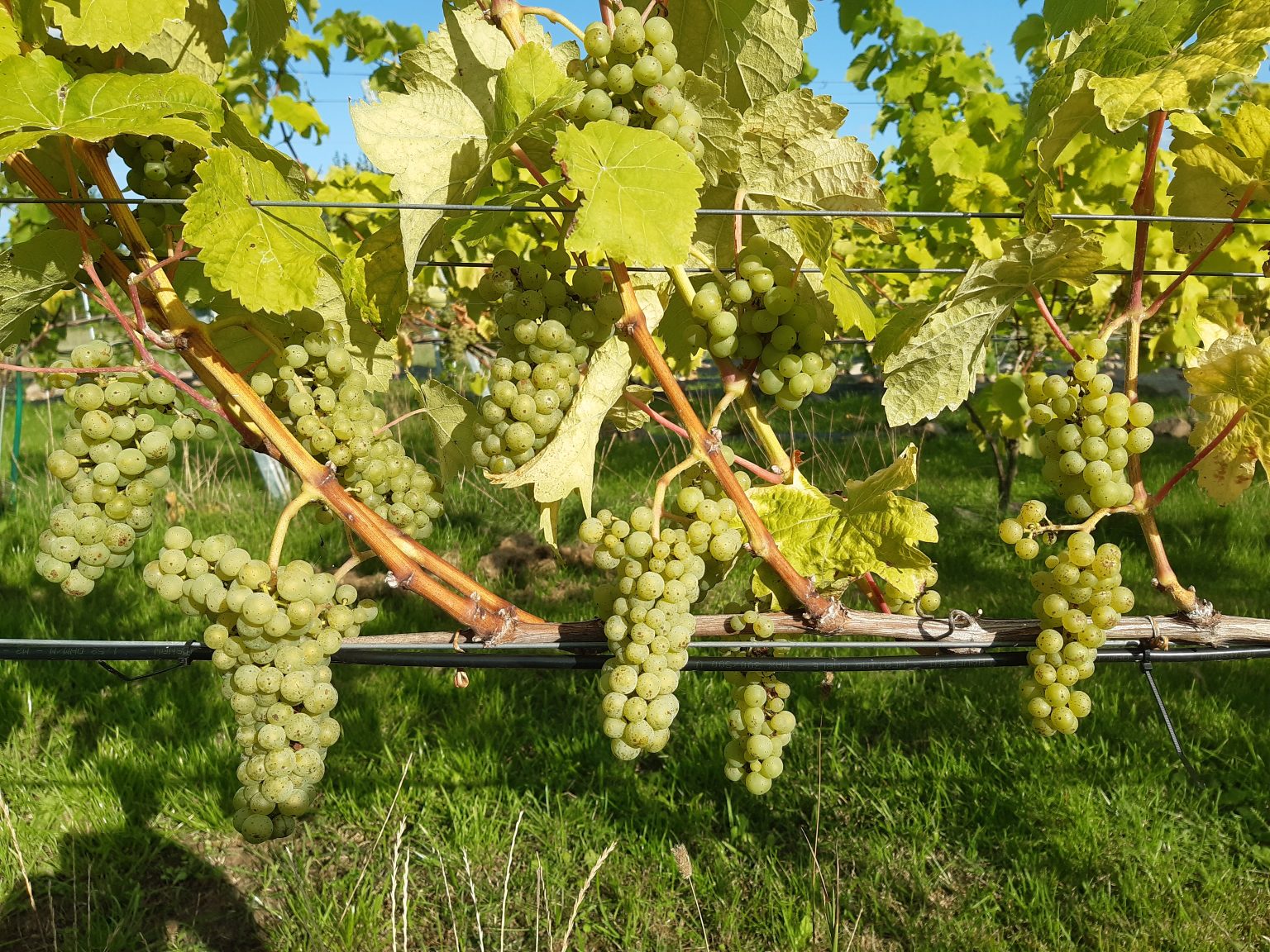
Read more about Danfoss heating system for vineyards here: DEVI heating cables
Does it work? May frost in 2023
We rarely have problems with frost, as the field is so close to the water. But on 18 May 2023 there was frost at night. When we got to the field 2 days later, we could see that most of the new plantings were scorched by frost from the ground up. Not all plants were affected. You could almost see how the cold frosty air had waved back and forth in the field.
However, it doesn't matter that the buds are scorched close to the ground, as long as the plants have surviving buds at the top that can shoot and form the two new tendrils we need. The young plants cannot be protected by heating cables until they have grown over the lower wire and bent down to the heating cable.
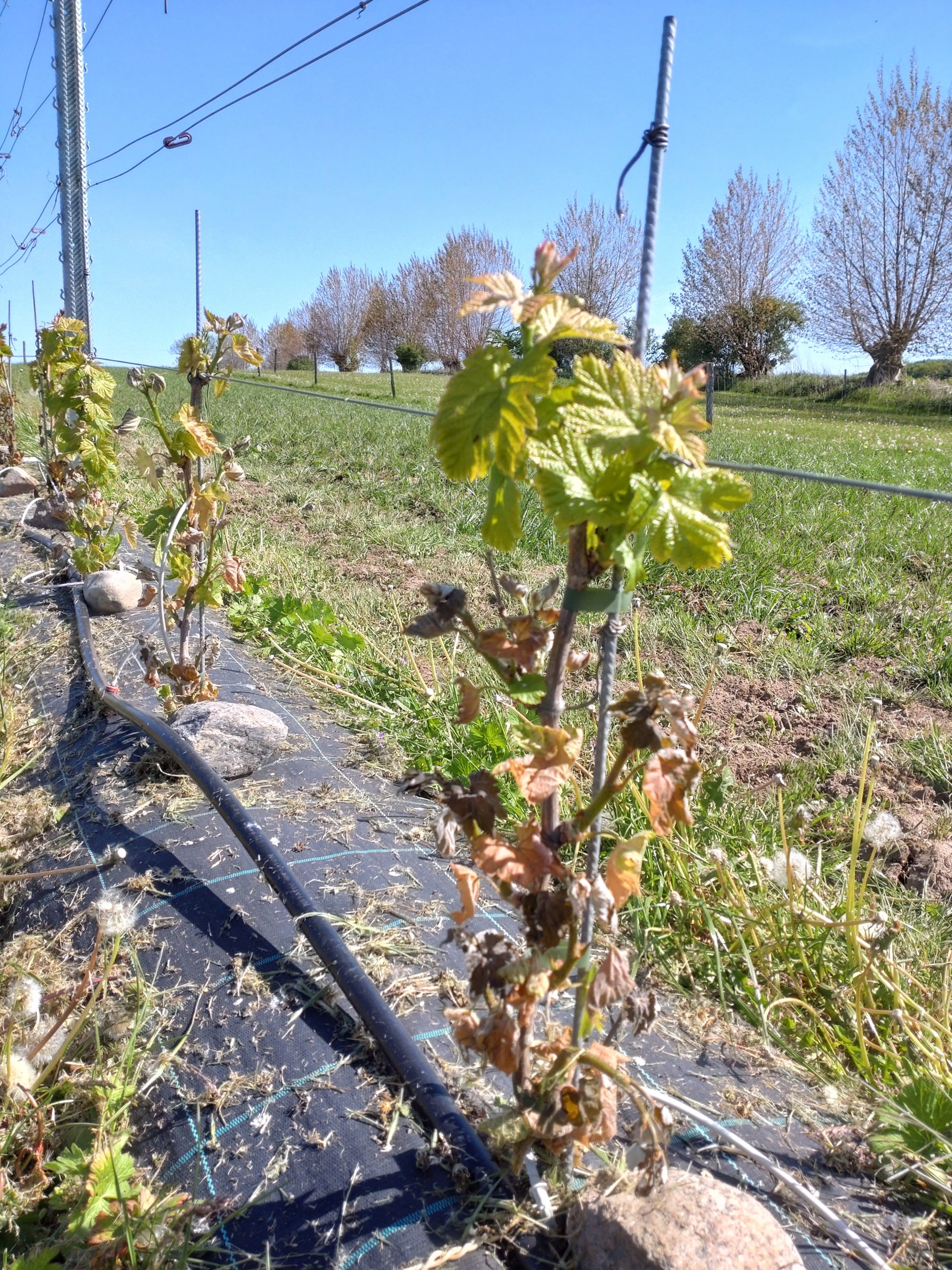
The old plants, which were protected by heating cables, were not affected at first inspection. But one of the plants for some reason had a tendril that hadn't been bent down to the cable. This vine was frostbitten even though it was higher up (further off the ground) than the vine bent down to the cable. There was therefore too far between the points of contact with the heating cable for the heat in the juice flow to reach out and heat up the buds.
The fact that the lower vine, right next to it, was not hit - and none of the other established vines with heating cables - must mean that the cables have provided the protection they should. So it seems the system is working. 🙂
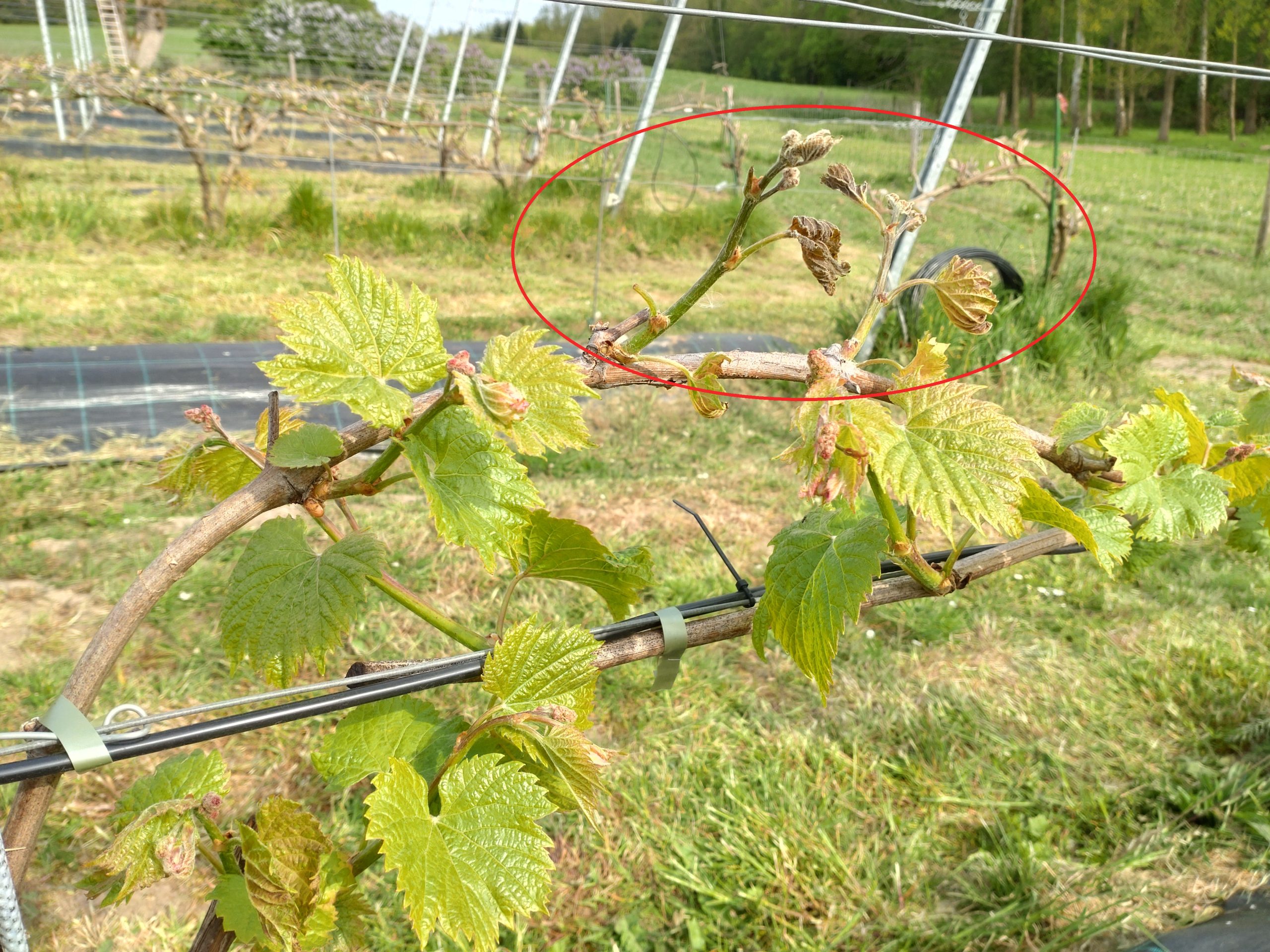
The measurements from the heating control show that the temperature was not terribly low. Only about one and a half degrees of frost, but it lasted about 5-6 hours, and it was enough to cause damage to unprotected plants.
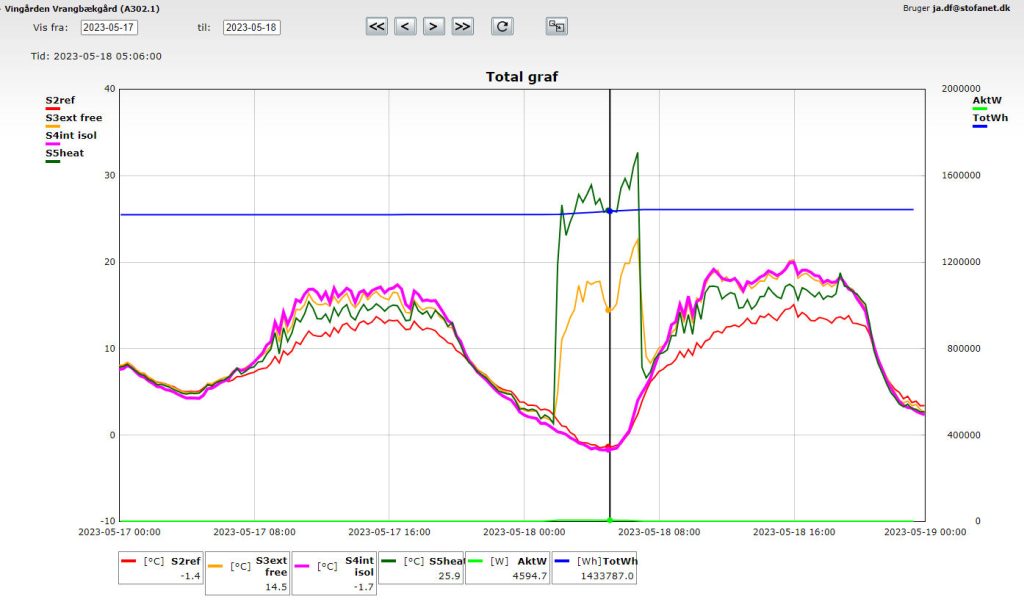
Power consumption in practice
How expensive is it to have such a plant running? This of course depends on how many cold spells there are each year during the spring - and how long they are.
360m of heating cable with 20 W/m becomes a heating element of 7.2 kW. Electricity prices vary quite a lot, but the plant usually only runs at the end of the night (when electric cars are set to charge because the current is generally lowest at that time), so if you - to make the calculation easy - set the price to DKK 2/kWh, then an hour's operation costs just under DKK 15.
That calculation must of course be scaled if it concerns a larger vineyard of e.g. 10,000 vines.
After the first seasons, our consumption in April and May can be read as:
| 2020 | 425 kWh (59 hours) | DKK 850 |
| 2021 | 275 kWh (38 hours) | DKK 550 |
| 2022 | 303 kWh (42 hours) | DKK 600 |
| 2023 | 140 kWh (19 hours) | DKK 280 |
It cannot pay many hourly wages to personnel who have to go out to light fires in the field during the night.
In addition, there is a continuous consumption for the controller and modem of approx. 5 kWh (DKK 10) per month if you let the system run all year round to have the temperature logged continuously in the vineyard.
In that case, you must remember to program 'holiday periods' in the system, so that it is only 'active' and turns on in April and May - but not also in November, when the temperature starts to drop at the start of winter.
We forgot to do that a few times, so the system ran for a few hours at the start of winter before we discovered it and switched it off.
The easiest thing is to switch on the 3 power circuits when you bend the tendrils down to the wire in April, and then switch off the circuits again in June, when the risk of frost is safely over. And let the power circuit for the controller and modem run continuously.
